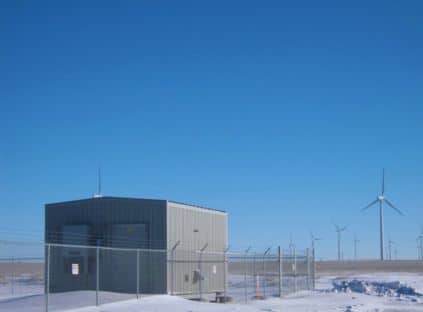Design Methods That Resist Snow, Wind, and Seismic Loads

All Trachte buildings are designed to resist the environmental loads as required by the building code for the specific site location of the building. Specifically, wind loads, seismic loads, and snow loads. The light gauge channel frame structure of our buildings gives us many options for economically resisting the most extreme environmental loading conditions.
Both wind and seismic have lateral load components that are resisted by the building lateral load resisting system. The building codes require that you design for the worst case between wind and seismic. In most locations in the United States, and due to the nature of our building, the wind load governs the design, but the methods for resisting wind and seismic are very similar.
The methods of resisting these lateral loads are very specific to the configuration of the building (width, length, height, wall openings) and the severity of the loads. In some cases, our exterior panels are sufficient for resisting the lateral loads. Under more severe cases, we add strap bracing, a shear wall or moment frame to resist the loads.
In addition to the lateral load resisting system of the building, we design the building anchoring system for these loads. In the most common situations, we use post installed anchors (i.e., wedge bolt type anchors or epoxy anchors). For severe loading cases, we would specify welded connections for anchoring.
Although widely used, the term “seismic zone” is outdated. The building codes use Seismic Design Category (SDC) to describe the relative intensity of the seismic activity in the area. These categories are A-F. The SDC dictates the allowable methods for resisting the lateral loads.
Beyond following the SDC guidelines, we do not do anything specific for seismic loading. All Trachte buildings are designed by a Professional Engineer that is licensed as a Civil and/or Structural Engineer in the state the building will be installed. The Professional Engineer provides stamped drawings and calculations for each building. The calculations are based on the building code requirements for the state the building will be in, and the code dictates the seismic requirements for the building.
The author is John E. Whalen, P.E., Director of Structural Engineering at Trachte
